World Elephant Day 2013
What kind of elephant lover am I that I was unaware of World Elephant Day until the eleventh hour! Once I found out I immediately took the opportunity to pull up my hundreds of photos from my experience at the Elephant Nature Park in Chiang Mai, Thailand and write about my experience. When I first was planning my trip to Thailand, I excitedly did some research into what exotic things I could do and see while there and the first thing I looked into was going on an elephant trek. Riding elephants, I mean what American wouldn’t love that right? The more I looked into riding the elephants the worse I felt about it. I know they are huge animals that probably wouldn’t mind a little freckled lady on their back but I couldn’t help but feel that it wasn’t what they were put here to be doing and I was sure conditions for elephants in captivity were not ideal. I decided I wanted to still get the chance to be around these majestic creatures without having anyone profit from mistreating these beautiful, gentle giants. To have the elephants behave and become submissive there are several cruel tactics that some mahouts, or elephant trainers will expose their elephants to so they can be domesticated.
Warning: This is a disturbing but educational video that shows you a video of the process of domesticating a wild elephant
In doing a little more research I found ENP. The 250-acre park was established in the 1990’s and is a non-profit organization providing a sanctuary for elephants needing rehabilitation and rescue. The ENP takes distressed pachyderms that have been domesticated and provide them with a safe space to feel like they are back in the wild. It’s truly like “elephant heaven”.
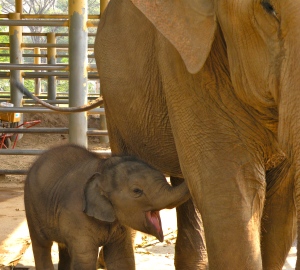
I had no clue that these animals were highly endangered. To get a better idea of how they came to need our help, knowing some history about how they got here is essential.
Thailand may only be similar to the size of Wyoming but it is home to one-tenth of all animal species living on earth in its lush forests. Technically because there is a dry period in Thailand these rainforest-like jungles are classified more as tropical, lowland, evergreen forest and because of the diverse vegetation between the north and the south it has the ability to host many varieties of plants and animals.

Northern Thailand used to be covered in dense forest and due to deforestation practices only about 25% of the woods remain. Demands for agriculture and logging influenced the destruction. They are ranked just behind Singapore in forest loss throughout Southeast Asia. In the late 80’s there was excessive rainfall resulting in massive flooding. The lack of forestry was one of the major factors for the flooding and as a result logging has since been banned in Thailand. Logging was a practice that was a job for many of the Asian elephants that roamed the country. Once the logging ban took effect in 1995 it left many elephants without work. Asian elephants had been slowly eradicating their homes so by the time they could be reintroduced into the wild, there was no space for them to go. Many jobless elephants were used for trekking tours and also as street performers to earn money with the rise of the tourism industry. Domesticated elephants in Thailand do not have the same rights as endangered elephants in the wild so education and conservation is the key in keeping these noble animals around to continue to be the symbol of Thailand.
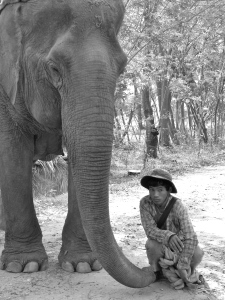
The park enables you to be in a space where elephants can feel like they are in their natural environment. You can spend the day feeding the elephants snacks, taking them down to the river to play in the water and learning more about the issues that elephants face in the country to prevent them from becoming extinct. I left the park feeling happy to have learned more about the issues surrounding the elephants in Asia and also feeling like I can make a difference by education others. I’ll be returning to Thailand in December and I plan on spending a week volunteering at the park to experience more of these amazing animals!
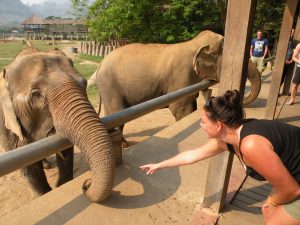
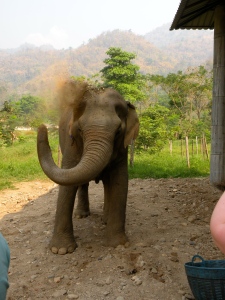
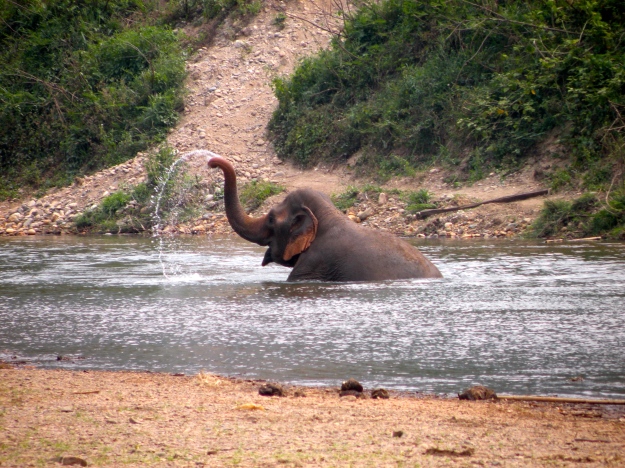
It is amazing to see how happy they are to be in a place where they can eat, play and wander around in a safe and loving environment. It is important for me to support an organization that cares for animals, our environment and our world. After the tsunami many people knew that ENP was a place for rescued animals and began bringing stray dogs to the property. They now have over 400 dogs that roam around with the elephants and are taken care of by the ENP staff and volunteers. The park makes it a priority to hire Thai mahouts to help care for the elephants by using positive reinforcement as opposed to cruelty. The fruit they feed the animals all come from Thai farmers, which helps in keeping local people employed. Go to http://worldelephantday.org/ to learn more about World Elephant Day and what you can do to help keep elephants around and I’ll be sure to update you when I come back from my next trip to Elephant Nature Park!
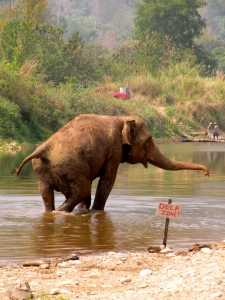





0 Comments
Joan Wiley
Abby, I love reading your stories of your travels, especially this elephant trip to Thialand, it was very informative on the treatment of these lovely animals, thank you for caring and how the Nature Park is saving them.
Speck on the Globe
Thanks Joan! I’m glad you are enjoying all my stories! I have to say I am enjoying writing them 🙂
Michael Lane
Thank you for this. It’s important for people to know that most elephants don’t have it very good in the tourist camps (where people can ride them, for example), and there are other alternatives that you can support in Thailand that care for the elephants and support them living a more natural life. It says something that you thought about what it would be like for the elephants when you were considering ‘riding’ them yourself, and you chose a better way for them–and had a great time yourself.